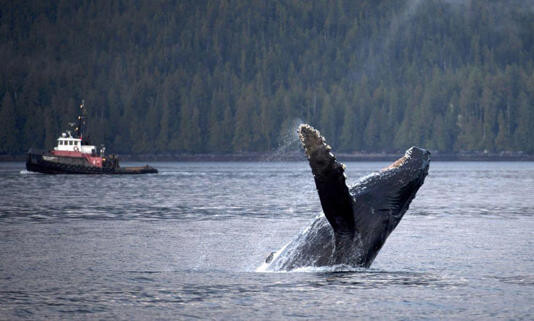I think that was the point of the graphic, because the rate of change is quite clearly unprecedented.
I’ve defiantly been hearing that more recently as well. The two things I would come back with are; 1)Each of those temperature variations have causes, and often that cause is changes in the CO2 cycle from volcanic eruptions or increase in plant life. 2) the changes we are experiencing now are at a rate never seen before, this isn’t happening over 1000’s of years it’s happening over 10’s of years.
Tackled by whom? Climate scientists are aware of the earlier changes and not only do they have consensus, non-controversial explanations for the causes of those other changes, they are all lacking in this current era of change.
Pointing to these earlier climate changes as a way to downplay what we are going through is reflexive contrarianism completely divorced from what the field understands.
It’s all obfuscation from vested interests. The tobacco companies do the same. (See the UK Politics thread)
Look at the story on the BBC website and the corresponding comments. Some are just waving it away as nonsense.
Frustrating to be honest.
100% but this could equally go in the social media thread, or the COVID thread, or the science thread where SME’s are ignored in favour of a blog, a YouTube vid or whatever.
I honestly don’t know who should tackle it but it needs to be done because it’s building momentum and some if these idiots exist in politics.
Ah but wouldn’t it be nice of the UK was like Mallorca or Ibiza?
Full of coked up chavs on the piss acting like twats thinking they own the place?
Sounds like a usual Friday/Saturday night out anywhere in the UK
How a huge new LNG plant spells ‘dire’ trouble for whales off Canada’s coast
Story by Leyland Cecco •3h
On a quiet summer evening last month, the crew of the Northern Expedition spotted a dark shape surfacing from the water off Canada’s west coast. Earlier that day, crew on the passenger ferry had made a similar sighting, and only narrowly avoided striking the humpback whale by ordering the ferry’s powerful engines to be reversed.
This time, the momentum of the 150-metre vessel was too much. It struck the hulking cetacean, sending the dull, jarring sound of metal against tissue reverberating throughout the ship. The crew were devastated; the head of BC Ferries called the collision “disturbing”. Nobody knows if the whale survived.
Collisions between large whales and even larger ships have been growing more common as marine traffic increases, including a spate of deadly collisions this summer (the same ferry struck another humpback a month earlier). Now, with the opening of a huge new liquid natural gas (LNG) terminal in 2025, transforming the deep fjords of northern British Columbia into a crowded marine highway, researchers are warning of a likely “dire” increase in whale deaths.
The nutrient-rich waters here were home to storied whale populations until widespread whaling nearly pushed species of humpback and fin whale to local extinction. However, an end to widespread slaughter has allowed populations to rebound, and now fin whales – which can reach 27 metres (90ft) in length and weigh as much as 70 tonnes – have been spotted traversing the frigid waters of the Kitimat fjord system, where they were once spotted in far larger numbers by the ancestors of the Gitga’at First Nation. Humpbacks – 18 metres long and 40 tonnes – have also been spotted in record numbers.
But the plight of Moon, a severely injured humpback that travelled thousands of kilometres from Gitga’at territory to Hawaii with a broken back, underscores the whales’ new foe. It is only expected to worsen when one of Canada’s largest fossil fuel investments becomes operational.
The LNG Canada project, initially envisioned as a way of moving large amounts of methane gas from Canada to Asia, has taken on new urgency as the war in Ukraine spurs nations to scramble for gas. A multibillion-dollar joint venture between the Royal Dutch Shell Company, Petronas, PetroChina, Mitsubishi and Korea Gas, the sprawling terminal facility rising outside the town of Kitimat will have two units to convert the methane into a liquid form for shipping.
When it opens in 2025, it will be able to export 14m tonnes of LNG a year – 3.4% of the 409m-tonne global imports number – a figure that could rise to 28m tonnes if more processing facilities are added
Company executives have said the project, which is also expected to add 4m tonnes of greenhouse gas emissions annually, will have a far smaller carbon footprint than similar projects globally. But critics say operations at LNG Canada will be the equivalent of adding nearly 870,000 cars to the road, and make it more difficult for British Columbia to meet its legislated targets for greenhouse gas reduction.
We hope the models are wrong, because these numbers are really high
Hussein Alidina, WWF Canada
It is also a threat to recovering whale populations by adding 350 ships to the Douglas Channel each year, or 700 total trips. In a new study, researchers predicted a 30-fold increase in strikes by large ships by 2030, which would result in the deaths of two more fin whales and 18 humpbacks each year than are already being killed.
“We hope the models are wrong, because these numbers are really high,” says Hussein Alidina of WWF Canada, who co-authored the paper. “But the team has done a lot of really diligent work in trying to make these models as conservative as possible – and we’re still getting these outcomes.”
These “unsustainable losses” would deplete whale populations and undo decades of conservation success, as well as dealing a blow to the new Great Bear Sea marine protected zone spearheaded by First Nations. The Gitga’at Nation, whose territory lies along the fjord system, does support the LNG project, but says it had growing concerns over whale safety.
“Gitga’at has been working with the shipping industry and managers on shipping guidelines to foster greater waterway safety in our territory,” the nation said in a statement. “We will continue that work to encourage and insist on implementing measures that better protect whales.”
Although LNG Canada is required to have a marine mammal management plan, it has not released one, Alidina says. “The public is not privy to the plan and neither are researchers, so we can’t scrutinise it.”
LNG Canada says it plans to have vessels travel at less than 10 knots within the Kitimat fjord system, a speed experts say will lessen but not eliminate fatalities. But the company also said that operational speeds would be “determined on a per-transit basis” by pilots given weather conditions and port schedules, and that “manoeuvrability will take precedence over slow transit speeds”.
Many scientists say a moratorium on vessel traffic in late summer, when the whales are most frequently spotted in the channel, would be the “best measure”
For Janie Wray, the CEO of the research group BC Whales, documenting future strikes is a “heart-wrenching” prospect. “We’re dreading it, because we know we’re going to be the ones that are going to witness it,” she says.
Wray and her group have spent years pleading with ships to immediately report any collisions so her team can dispatch a craft within minutes. They didn’t learn about the Northern Expedition strike until nearly 24 hours later – far too long to seek out an ailing whale.

“There’s a chance that in the coming years, if things don’t change, we might have to reassess the whole humpback and fin whale populations. A huge impact is coming,” says Wray.
She added that the recent surge in strikes has happened even without the new LNG terminal adding hundreds of ships to the region. “I worry that reality is going to bite us very hard.”
That bird shelter is good until you put the washing out.
Something all aussies will know how true this is.
I was in Paris these last days. Wonderful weather, as can be the case in October. An ‘Indian summer’, which made the experience as good as can be.
However, everyone was out on the street in tee-shirts, without any pullover or vest. Many people were in shorts or skirts. My wife was walking in sandals with naked feet.
What makes it special though is that this wasn’t just during the warmer period of day, but from early morning until late night. Actually, during the afternoons, the sun was almost too hot to stay without looking for shadow. Yesterday and the day before, we walked along the Seine, and people were looking for refuge under trees or bridges because it was too hot to stay in the sun. It wasn’t a July-like summer, but certainly felt like as we were end of August.
I won’t complain, as it was the ideal weather for everything we made there, but I have to be honest: it was scarily beautiful.
if you want the world to move away from Russian gas, that shortfall has to come from somewhere.
deeper into the article, it goes from “crowded marine highway” to an actual number of 350 trips a year. or… 1 ship per day.
I suppose most of them are crammed into a few months which could make quite a difference, no?
Yeah the article itself can be interpreted in slightly different ways, because the author, whilst offering some facts, has still left his overall message a tad confusing. Even if it is an additional 350 ships per year, that still translates as 700 journeys, as in, to and from the port. As @Flobs states, this might be condensed through a shorter timeline, this would impact the various speed limits of the vessels, increase them above the ideal scenario maybe, to align with shuttle nature of port docking arrival, and departure times.
Between the lines, the article also hints, it is almost a given, that once the first phase of the project is up and running to initially offer the facility, an additional increase of capacity would probably/automatically be forthcoming, at a second phase of the project.
It just seems that the welfare and safety of the whales, is somewhat right down the pecking order of priority, given up in the name of progress in that area of the country.
Kitimat is not a significant port now. It has operating docking facilities that are used by Rio Tinto, but the traffic levels probably don’t reach one ship a week, and I suspect they are nowhere near as large as LNG tankers. The LNG plant will dramatically increase traffic in what is essentially a fjord. To Flobs’ question though, it would not be particularly seasonal. The LNG plant would operate year-round, and Kitimat is ice-free. The channel is also quite deep right up to Haisla/Kitimat.
no, the ports don’t work like that at all. they are scheduled in advance and are staggered to provide consistent loading. usually the vessel will arrive to the port a day or two early (empty) and the crew will get shore leave while waiting to load. The vessel will then move into loading position on it’s own or by tugboat and they’ll load the ships provisions from the dock while the cargo is being loaded. Am not sure of the protocols and procedure surrounding an LNG transfer from the land storage to the ship itself, if they would be allowed to run forklifts on the docks while transferring the LNG.. depending on the ship’s origin, they may not load provisions at all as food would be expensive in Kitimat. Likely just fresh water

